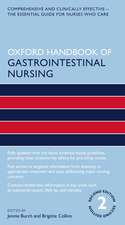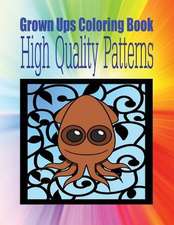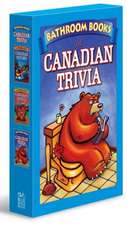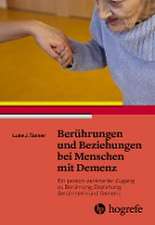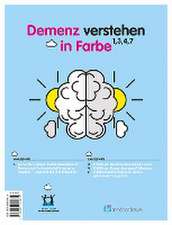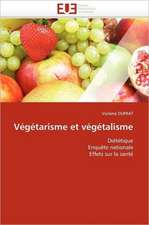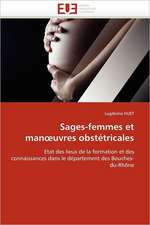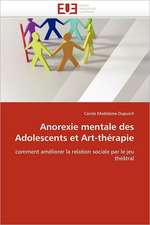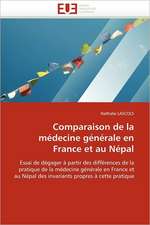Nursing Care: an essential guide for nurses and healthcare workers in primary and secondary care
Autor Barbara Smith, Linda Fielden Limba Engleză Paperback – 3 dec 2010
- Comprehensively covers all aspects of essential care
- Puts care into context and relates it to current UK Government policy and targets
- Shows how to apply theory in practice using diagrams and case studies
- Uses a ‘reflective’ theme throughout, in line with current teaching practice
- Explains Clinical Skills in the context of care
Essential reading for nursing students, qualified nurses and all health and social care workers
| Toate formatele și edițiile | Preț | Express |
|---|---|---|
| Paperback (2) | 250.48 lei 6-8 săpt. | +29.46 lei 7-13 zile |
| Taylor & Francis – 4 sep 2019 | 319.49 lei 3-5 săpt. | +29.46 lei 7-13 zile |
| Taylor & Francis – 3 dec 2010 | 250.48 lei 6-8 săpt. |
Preț: 250.48 lei
Preț vechi: 320.88 lei
-22% Nou
Puncte Express: 376
Preț estimativ în valută:
47.93€ • 50.04$ • 39.67£
47.93€ • 50.04$ • 39.67£
Carte tipărită la comandă
Livrare economică 05-19 aprilie
Preluare comenzi: 021 569.72.76
Specificații
ISBN-13: 9781408251393
ISBN-10: 1408251396
Pagini: 364
Dimensiuni: 170 x 244 x 21 mm
Greutate: 0.64 kg
Ediția:Revizuită
Editura: Taylor & Francis
Colecția Routledge
Locul publicării:Oxford, United Kingdom
ISBN-10: 1408251396
Pagini: 364
Dimensiuni: 170 x 244 x 21 mm
Greutate: 0.64 kg
Ediția:Revizuită
Editura: Taylor & Francis
Colecția Routledge
Locul publicării:Oxford, United Kingdom
Cuprins
Acknowledgements
Guided tour
Introduction
Chapter 1: What is caring?
Introduction
Learning objectives
What do we mean by ‘caring’?
Quality
The assessment process
Summary
Key points
Points for debate
Links to other chapters
Further reading
References
Chapter 2: Dignity and privacy
Introduction
Learning objectives
Dignity in care
Culturally sensitive healthcare
Communication
Protecting individuals from abuse
Summary
Key points
Points for debate
Links to other chapters
Further reading
References
Chapter 3: Basic observations
Introduction
Learning objectives
The importance of basic observations
Pulse
Respirations
Temperature
Summary
Key points
Points for debate
Links to other chapters
Further reading
References
Chapter 4: Hygiene
Introduction
Learning objectives
Personal hygiene
Oral hygiene
Infection control
Summary
Key points
Points for debate
Links to other chapters
Further reading
References
Chapter 5: Nutrition
Introduction
Learning objectives
The importance of good nutrition
Essential nutrients
Nutritional requirements
Factors affecting nutritional choice
Nutritional assessment
Nutrition in hospital
Feeding patients
Dysphagia awareness
Summary
Key points
Points for debate
Links to other chapters
Further reading
References
Chapter 6: Fluid balance and continence care
Introduction
Learning objectives
Fluid balance
Recording fluid balance
Urinary continence
Incontinence
Promoting continence
Catheter care
Problems with elimination of faeces
Summary
Key points
Points for debate
Links to other chapters
Further reading
References
Chapter 7: Pain management:
Introduction
Learning objectives
What is pain?
How is pain felt?
Government policy developments in pain management
Pain assessment
Pain perception
Pain management
Other methods of pain relief
Summary
Key points
Points for debate
Links to other chapters
Further reading
References
Chapter 8: Pressure ulcers
Introduction
Learning objectives
Why study pressure ulcers?
How and why pressure ulcers develop
Avoidance of pressure ulcers
Screening and assessing the possibility of skin damage due to pressure
Pressure ulcer healing
Summary
Key points
Points for debate
Links to other chapters
Further reading
References
Chapter 9: Rehabilitation and self-care
Introduction
Learning objectives
What is rehabilitation?
Independence and self-care
Framework for rehabilitation nursing
Factors that impact on individual wellbeing
Summary
Key points
Points for debate
Links to other chapters
Further reading
References
Chapter 10: Record-keeping
Introduction
Learning objectives
Overview of record-keeping
Purpose of records
Legal aspects of record-keeping
Nursing documentation
Standards for record-keeping
Summary
Key points
Points for debate
Links to other chapters
Further reading
References
Index
Guided tour
Introduction
Chapter 1: What is caring?
Introduction
Learning objectives
What do we mean by ‘caring’?
Quality
The assessment process
Summary
Key points
Points for debate
Links to other chapters
Further reading
References
Chapter 2: Dignity and privacy
Introduction
Learning objectives
Dignity in care
Culturally sensitive healthcare
Communication
Protecting individuals from abuse
Summary
Key points
Points for debate
Links to other chapters
Further reading
References
Chapter 3: Basic observations
Introduction
Learning objectives
The importance of basic observations
Pulse
Respirations
Temperature
Summary
Key points
Points for debate
Links to other chapters
Further reading
References
Chapter 4: Hygiene
Introduction
Learning objectives
Personal hygiene
Oral hygiene
Infection control
Summary
Key points
Points for debate
Links to other chapters
Further reading
References
Chapter 5: Nutrition
Introduction
Learning objectives
The importance of good nutrition
Essential nutrients
Nutritional requirements
Factors affecting nutritional choice
Nutritional assessment
Nutrition in hospital
Feeding patients
Dysphagia awareness
Summary
Key points
Points for debate
Links to other chapters
Further reading
References
Chapter 6: Fluid balance and continence care
Introduction
Learning objectives
Fluid balance
Recording fluid balance
Urinary continence
Incontinence
Promoting continence
Catheter care
Problems with elimination of faeces
Summary
Key points
Points for debate
Links to other chapters
Further reading
References
Chapter 7: Pain management:
Introduction
Learning objectives
What is pain?
How is pain felt?
Government policy developments in pain management
Pain assessment
Pain perception
Pain management
Other methods of pain relief
Summary
Key points
Points for debate
Links to other chapters
Further reading
References
Chapter 8: Pressure ulcers
Introduction
Learning objectives
Why study pressure ulcers?
How and why pressure ulcers develop
Avoidance of pressure ulcers
Screening and assessing the possibility of skin damage due to pressure
Pressure ulcer healing
Summary
Key points
Points for debate
Links to other chapters
Further reading
References
Chapter 9: Rehabilitation and self-care
Introduction
Learning objectives
What is rehabilitation?
Independence and self-care
Framework for rehabilitation nursing
Factors that impact on individual wellbeing
Summary
Key points
Points for debate
Links to other chapters
Further reading
References
Chapter 10: Record-keeping
Introduction
Learning objectives
Overview of record-keeping
Purpose of records
Legal aspects of record-keeping
Nursing documentation
Standards for record-keeping
Summary
Key points
Points for debate
Links to other chapters
Further reading
References
Index
Descriere
Go ‘back to basics’ with this concise, clear text on the essentials of nursing care.
Essential reading for nursing students, qualified nurses and all health and social care workers
- Comprehensively covers all aspects of essential care
- Puts care into context and relates it to current UK Government policy and targets
- Shows how to apply theory in practice using diagrams and case studies
- Uses a ‘reflective’ theme throughout, in line with current teaching practice
- Explains Clinical Skills in the context of care
Essential reading for nursing students, qualified nurses and all health and social care workers
Notă biografică
Barbara Smith is a freelance consultant, lecturer and retired nurse, RGN, RSCN.
Linda Field is a Research Nurse Facilitator, RGN, ONC. She was formerly Nurse Advisor and Senior Nurse Lecturer/Teaching Fellow/Education Facilitator at the University of Warwick.
Linda Field is a Research Nurse Facilitator, RGN, ONC. She was formerly Nurse Advisor and Senior Nurse Lecturer/Teaching Fellow/Education Facilitator at the University of Warwick.


